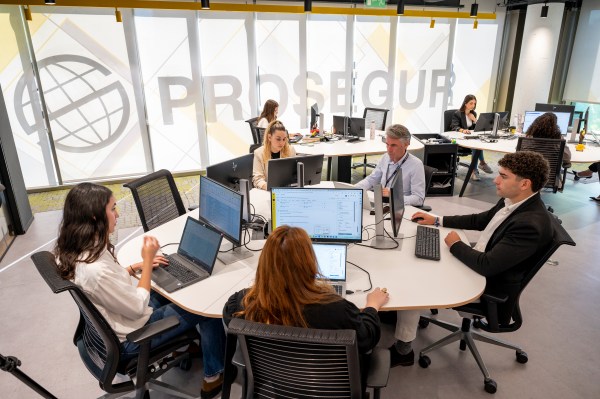To refresh our knowledge or acquire new skills. To keep learning so as not to fall behind or to reinvent ourselves. The use of corporate training with artificial intelligence, AI, is growing thanks to the development of technology.
Why is continuous learning important for companies?
For adaptation. If companies do not adapt to innovations, they become less competitive, which can lead to closure or job losses in the face of unpredictable, critical situations. In other words, without the capacity for change, organisations are bound to disappear, just like dinosaurs.
WhatsApp, Zoom, LiveWeminar, Google Calendar, WeTransfer, the use of Social Networks and the Metaverse are tools that are here to stay, and that will change over time. Therefore, in addition to learning to manage them, we need to develop new emotional skills to help us adapt to the technological, cultural and social changes that set the pace of change.
Further education is based on active and constant learning processes that focus on bringing training to all professionals in order to extend the technical training previously acquired, and help them specialise, update or refresh their knowledge, according to their needs and those of their company, regardless of whether or not they have prior official or specific qualifications.
In addition, new positions and roles are emerging within companies, especially now that we are in the midst of a digital transformation that is so important for driving economic growth in the wake of the healthcare crisis.
The power of AI for workforce training
The aim of corporate training with artificial intelligence, AI, is not only to increase workforce productivity, but also to make employee tasks easier and improve the working environment by promoting aspects such as teamwork and personal development. And in order to bring all these possibilities closer, companies have found a great ally in technology.
The terms online or remote training and blended learning have become commonplace. With the deployment of new technologies such as the 5G network, it is possible to develop tools based on powerful innovations such as artificial intelligence, AI, and easily access new knowledge.
One of the most important features of AI is its ability to mimic the learning processes of the human brain. Artificial intelligence (AI) systems also copy the way humans solve problems and make decisions. That is what makes them tools capable of boosting people’s talent.
And language teaching has been one of the fields that has known how to best exploit these characteristics. Platforms such as Duolingo or the method developed by the company 8Belts are proof of this. The latter has imitated the way a child learns to speak, i.e. natural learning, to create an algorithm that allows pupils to learn a language in 8 months.
AI also makes it possible to design personalised programmes and create tools to support learners. Thanks to their capability for speech and language processing, learners can rely on intelligent tutoring systems (ITS) and chatbots, which make tutoring easier during learning. These “assistants” automatically transform written and spoken language comprehension into knowledge and can even monitor live calls.
How AI-enabled corporate training improves business competitiveness
This technology is having such an impact on both the way we teach and the way we learn that corporate training with AI has already become a support tool for trainers and helps design training circuits tailored to employees, for example, with programmes based on “microlearning” or training pills, which come complete with recommendations based on the needs and characteristics of the student.
These AI-enabled corporate training models go a step further and help business and HR managers spot talent.
Training for professions that… don’t exist!
As Paz Gómez, a coach specialised in talent, said in the series Haciéndote Preguntas (Asking You Questions) of the San Pablo CEU University Foundation, “six out of ten school-age children will work in professions that do not exist yet”. And the truth is that, at present, there is an ongoing ever-growing demand to fill those positions that do exist.
The Telefónica Foundation has created the Employment Map, which generates a list of the most in-demand digital professions in our country and displays the skills that professionals must have in order to access these positions. To do this, the interactive tool uses Big Data to analyse more than 82,000 published offers.
Out of all of these, the most sought-after skills (which fit the needs of companies) are Java, Cloud Computing, JavaScript, Git and HTML. These tools help workers and organisations design training circuits in a clear and agile way.
But learning does not necessarily have to be about developing digital and technological skills. Corporate training with artificial intelligence, AI, is very varied, and can have different approaches and objectives, such as the well-known reskilling and upskilling. The first term refers to the acquisition of new skills to perform a different job than the one done before, while the second term is all about acquiring new skills to better adapt to the current position, including improving personal competences such as resilience, flexibility or creativity.
With this as our starting point, there is an interesting journey ahead to further improve corporate training programmes with artificial intelligence, AI, and the way we think about what the future of learning will look like.









